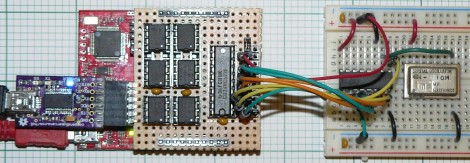
The Cool Master is a beer delivery system which Innovation Thirst built as their qualifying entry for this year’s Red Bull Creation contest. It’s one of the best beer delivery concepts we’ve ever seen. Instead of tossing you a beer directly from the fridge, this offering brings the cold beverages directly to you. It even manages to de-cap the bottles before serving.
Mobility is provided by a six-wheeled base which allows for a zero-turn radius. The cooler acts as the body of the robot, and hides a hopper which carries a stock of bottles on their sides. When you want a beer, the bot approaches you, tilts the next bottle to the upright position, removes the cap, then raises the vessel on a beer elevator until it pushes its way through the rubber orifice in the cooler’s lid. Right now the device is operated using an RC controller, but there’s always room for adding autonomy and the ability to restock from a refrigerator. Don’t miss the demo video after the break.
Continue reading “Cool Master Advanced Beer Delivery System”

















